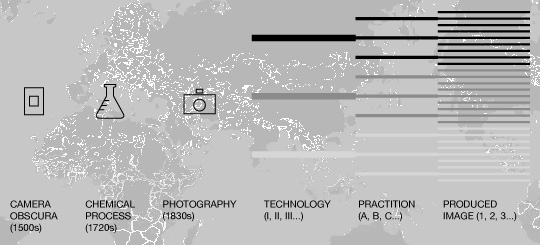| Photography: | An attempt to map photography and the dynamic relationships it forms with social, political and aesthetic systems. |
| : introduction | : emergence | : implications | : effect |
|
In the 1830s a handful of developers from different societies, simultaneously and without knowledge of each other, had advanced this technology to a sustainable stage. The name photography was derived during this period from Greek, which translates to “Drawing with Light”. The early technologies were made available for the public domain in 1839. Due to the immense power of this medium, and its ability to be used as a vehicle for the controlling the society, the powerful of the cultures began acquiring all types/technologies of apparatus available for photography, and invested more on its developments. This followed its availability and further development in more cultures and societies all over the globe. In many cultures, the photographic field soon became one of the most subliminal weapons developed, which creates its diversified technological structure. It has no united history nor does it have any definite identity. This medium is used by many institutions/practitioners throughout many societies, with a unified purpose: to establish and maintain power. Photographs have an indexical relationship of the world they represent; intricately linked within the culture/context it is viewed in. The amount of reality or lack thereof, attached to a photograph, has always been controlled in all cultures by the ones who exert control. Photography has a political nature of establishing inescapable aesthetic choices. Thus this makes photography truly an artificial eye through which we are shown and directed to alternate realities that deceivingly assist us complete our vision of reality. |
| ©2005 Shahee Ilyas. Please email comments to shahee@shaheeilyas.com |
